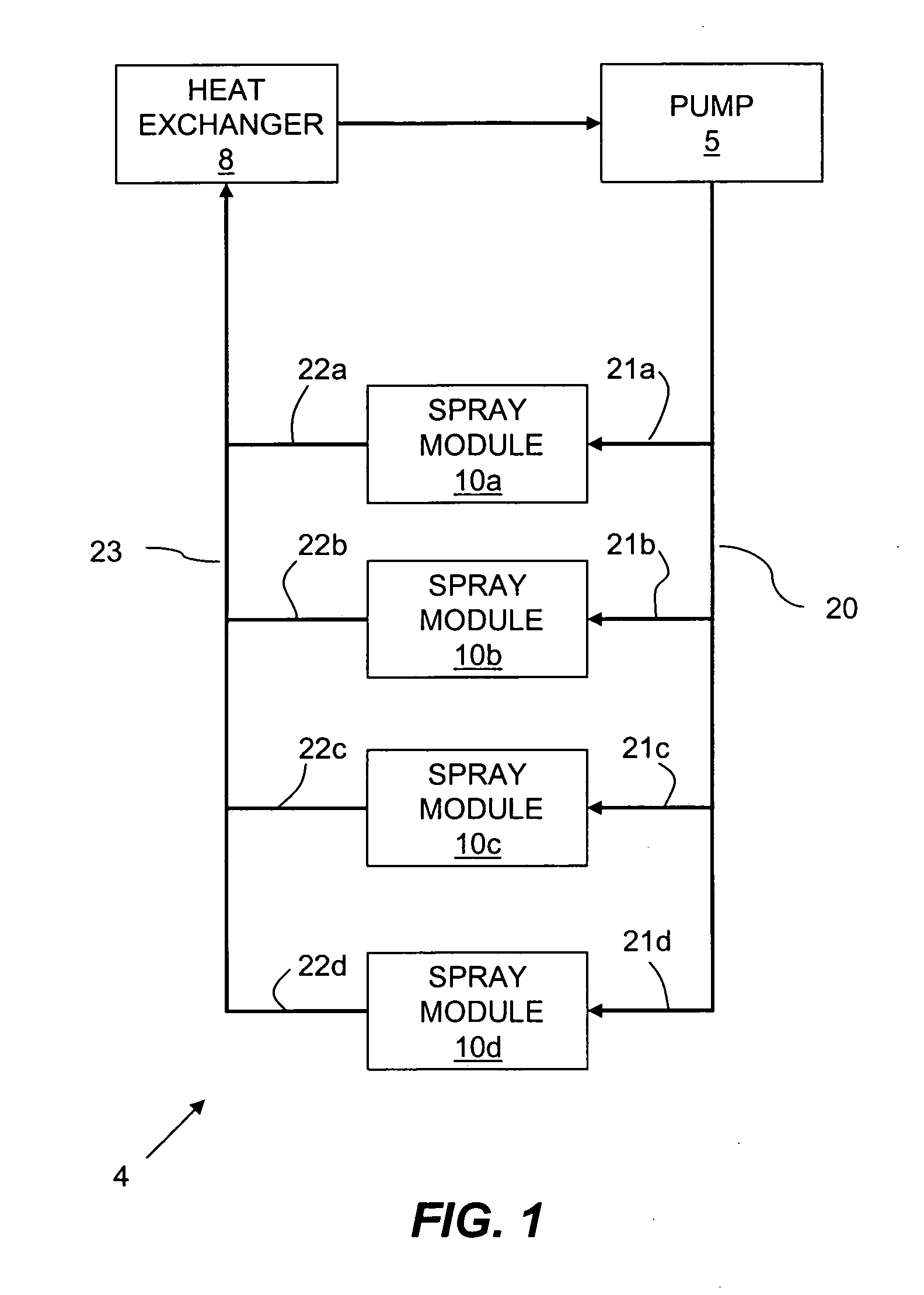Low momentum loss fluid manifold system
a fluid manifold and low momentum loss technology, applied in the field of liquid cooling thermal management systems, can solve the problems of liquid cooling being liquid cooling a single processor may require a cost premium, and the cost of liquid cooling can be more expensive than air cooling, so as to achieve the effect of low momentum loss
- Summary
- Abstract
- Description
- Claims
- Application Information
AI Technical Summary
Benefits of technology
Problems solved by technology
Method used
Image
Examples
Embodiment Construction
[0028]Many of the fastening, connection, manufacturing and other means and components utilized in this invention are widely known and used in the field of the invention are described, and their exact nature or type is not necessary for a person of ordinary skill in the art or science to understand the invention; therefore they will not be discussed in detail.
[0029]Applicant hereby incorporates by reference U.S. Pat. No. 5,220,804 for a high heat flux evaporative cooling system. Although spray cooling is herein described as the preferred method of two-phase cooling, the present invention is not limited to such a system. Spray cooling is only discussed in detail to provide a known preferred embodiment.
[0030]Now referring to FIG. 1, a two-phase thermal management system 4 is shown. A cooling fluid (not shown) is pressurized by a pump 5. An exemplary cooling pump 5 is described by U.S. Pat. No. 6,447,270. The cooling fluid may be any one of a wide range of commonly known dielectric or n...
PUM
 Login to View More
Login to View More Abstract
Description
Claims
Application Information
 Login to View More
Login to View More - R&D
- Intellectual Property
- Life Sciences
- Materials
- Tech Scout
- Unparalleled Data Quality
- Higher Quality Content
- 60% Fewer Hallucinations
Browse by: Latest US Patents, China's latest patents, Technical Efficacy Thesaurus, Application Domain, Technology Topic, Popular Technical Reports.
© 2025 PatSnap. All rights reserved.Legal|Privacy policy|Modern Slavery Act Transparency Statement|Sitemap|About US| Contact US: help@patsnap.com



